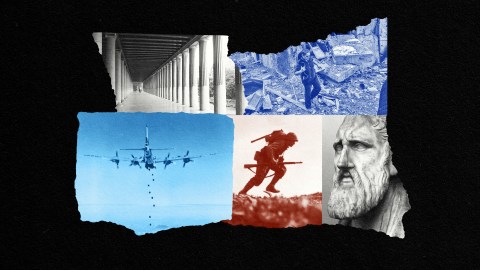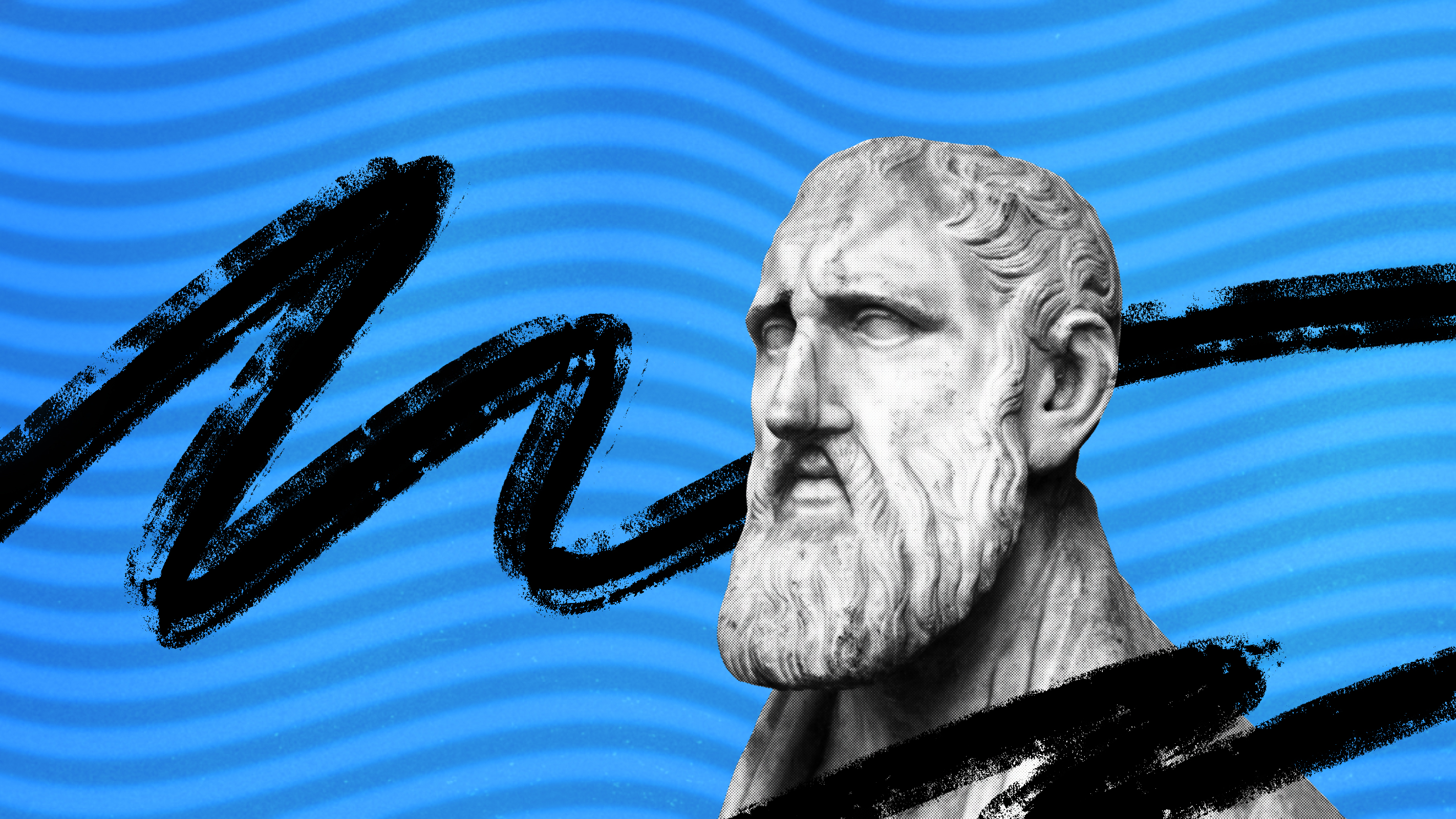Stoicism isn’t so great when you live in a war zone

- Many Stoic principles — from pragmatism to the acceptance of fate — become practically untenable during extreme crises.
- The physical and emotional effects of chronic trauma can be addressed with body-centered therapies such as yoga and dance.
- In chronically traumatic situations, balancing Stoicism with emotional release is crucial.
As the world grapples with the demands of hustle culture and the chaos of the contentious political climate, Stoicism has re-emerged as a beacon of strength. It offers practical wisdom and resilience-building techniques, which resonate with many facing stress.
Stoic philosophy emphasizes emotional regulation, minimizes negativity, and nurtures virtuous traits. However, it can prove limited in addressing extreme and prolonged crises, specifically complex trauma. Such situations pose unique challenges that test the effectiveness of Stoicism’s teachings.
Complex trauma encompasses a range of experiences, including ongoing abuse, neglect, captivity, human trafficking, genocide, and living in a war zone or area of civil unrest. For demonstrative purposes, we will use the example of war.
Virtue and the dichotomy of control
Virtue is the ultimate goal in Stoicism, encompassing wisdom, justice, courage, and temperance. However, during severe crises like war, maintaining virtue becomes challenging due to the ethical dilemmas that inevitably arise.
In war, commanders and soldiers face many catch-22 situations and difficult choices, such as risking civilian lives or inflicting collateral damage in pursuit of military objectives, or deciding when to use lethal force while adhering to the rules of engagement. Balancing self-protection with a sense of proportionality is necessary in both offensive and defensive operations but hard to achieve.
As one of many paths to attain virtue, Stoicism teaches the “dichotomy of control” — distinguishing between what we can and cannot control. It posits that by focusing on our thoughts and actions, and accepting external events, we find inner peace and resilience.
Approaching crises with pragmatism indeed has its merits. During crises like missile attacks, the mental burden of ensuring personal and family safety can be severe. Pragmatism helps mitigate risks. For example, the creation of a comprehensive safety plan — seeking shelter in inner areas of the home and abiding by the “law of two walls,” which dictates sheltering in a place located behind the second retaining wall away from a building’s facade — reduces danger in the event of a missile strike. The resulting sense of psychological safety can make it easier to compartmentalize the external chaos and focus on productive tasks.
However, the piercing sound of an air raid siren often triggers a rapid somatic and physiological response, increasing blood pressure, inducing panic, and activating the body’s fight or flight mechanism. In circumstances like this, maintaining rational understanding and discerning control becomes challenging. The lines between influence and lack of control become blurred. While taking safety measures can provide some relief, there is still a chance that a missile will breach protective walls. Needless to say, this is not within one’s control.
The limitations of Stoicism
Stoicism emphasizes emotional resilience (by cultivating indifference to preserve a composed and rational mindset) as well as mindfulness (a combination of self-discipline, gratitude, the pursuit of inner tranquility, and meditation) but the harsh realities of war bring significant challenges. The Stoic principle of memento mori (“remember death”), which fosters an appreciation for the present moment, may in fact amplify psychological distress. And amor fati (literally “love of fate” or the acceptance of fate) becomes more or less untenable after witnessing or experiencing atrocities. Another limitation of Stoic philosophy is the passivity it can encourage in the face of violence and oppression. Nations, like Ukraine, that must defend their existence often survive precisely because they refused to accept their fate.
War brings profound suffering, and with it the need to acknowledge emotions. While maintaining composure during a crisis is admirable, suppressing emotions and toxic positivity can worsen the emotional toll, eventually leading to increased stress, anxiety, numbness, difficulty connecting with others, and an elevated risk of long-term psychological harm, such as developing depression. Therefore, it is crucial to find healthy outlets to process and express emotions, and to work through them constructively. True emotional resilience lies in accepting challenges, embracing the full range of emotion, and employing coping strategies for balanced well-being.
The physical effects of trauma
While a Stoic response initially can help a person accept danger and the risk to their life, the daily threats posed by war lead to chronic traumatic stress, which profoundly impacts the nervous system. Trauma activates the limbic system, triggering a “fire alarm” response and releasing stress hormones for survival. Typically, the parasympathetic nervous system restores calm after the danger subsides, allowing normal cognitive function. But complex trauma disrupts this equilibrium, keeping individuals in a chronic state of survival mode and hyper-arousal.
Complex trauma, as described by Bessel van der Kolk in The Body Keeps the Score, can result in lasting symptoms such as headaches, muscle tension, fatigue, and gastrointestinal issues. Chronic stress from trauma can also harm the immune system and contribute to chronic health problems.
Releasing stored trauma
Because trauma is not solely a cognitive experience but also manifests in the body, van der Kolk suggests that traditional talk therapy may not be sufficient for releasing this stored trauma.
The emotional brain (amygdala) and the rational mind (prefrontal cortex) work differently. The amygdala rapidly detects threats and initiates a stress response unconsciously, but talk therapy engages the rational mind. This necessitates therapies that target the amygdala and limbic system to address trauma-induced panic responses. Somatic (or body-centered) therapies can teach your body that it does not have to be prepared for trauma all the time. Somatic approaches — such as yoga, sensorimotor psychotherapy, breathwork, massage, and dance or movement therapy — connect body and mind to release and process trauma. In fact, singing and dancing are very effective at allowing people to experience a sense of release and catharsis.
In chronically traumatic situations, balancing Stoicism with emotional release is crucial. It requires discerning when to practice Stoicism to endure challenging moments, where logic and reason need to dominate, and when it is safe to release and process trauma, to be able to handle the next blow.





